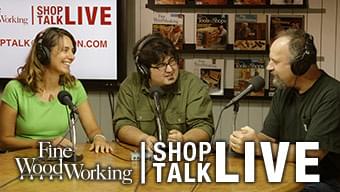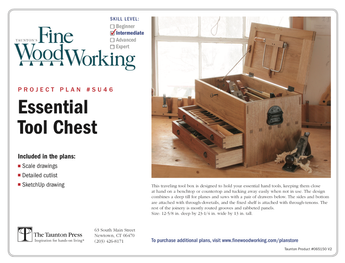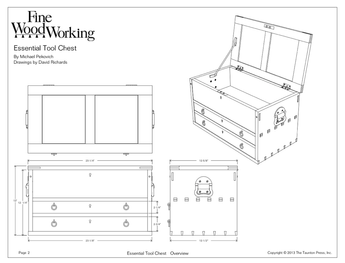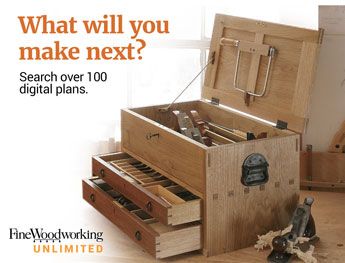I’ve just come out of the shop where I encountered a problem I’ve wrestled with for years. I do a lot of antique restoration and run into the problem of nails put into turnings and seats to hold spindles that have come loose. Usually what I do is use a nail set with a point ground onto it and get the point driven into the side of the nail. Then I lever the nailset up while tapping the end of it with a hammer. Sometimes it works but often (like this morning) I wind up removing a lot of material around the nail before being able to get it out. I’ve asked a couple of conservators who have said they have a way but won’t explain it. Any answers?
Discussion Forum
Get It All!
UNLIMITED Membership is like taking a master class in woodworking for less than $10 a month.
Start Your Free TrialCategories
Discussion Forum
Digital Plans Library
Member exclusive! – Plans for everyone – from beginners to experts – right at your fingertips.
Highlights
-
Shape Your Skills
when you sign up for our emails
This site is protected by reCAPTCHA and the Google Privacy Policy and Terms of Service apply. -
 Shop Talk Live Podcast
Shop Talk Live Podcast -
 Our favorite articles and videos
Our favorite articles and videos -
E-Learning Courses from Fine Woodworking
-
-
 Fine Woodworking New England Event
Fine Woodworking New England Event -












Replies
You might try a small pair of vise grips -
Grind a sharp point on the jaws -
weld a bar to the back handle but make the handle like a auto dent puller .
Open them and tap the points down on each side on the nail head then jerk it out with the sliding weight on the handle.
Edited 6/29/2003 7:40:21 PM ET by I Like Beans
Hank, An old trick that I used when I was a locksmith, ( I'm now retired) was to use two needles to pry out broken off keys in lock cylinders and such.
If, you can procure two long harness or sail makers needles, or perhaps a swiss pattern file and grind the points to a flat chisel edge, no wider than the nail , you can'lever" them out enough to grasp with a small vise grip plier.
Put wood handles on them for 'pry- power.'
To avoid chewing up the wood's surface, tape a small metal washer, (with the hole surrounding the nail) over the 'probe area' before digging in.
On round areas such as spindles, bend the washers concave.
I make washers from electrical box's 'knock-outs' (The're free and come in several sizes and you can custom make the holes to suit.) Stein.
If you have a nail holding a tenon in a chair stretcher or a leg into a rocker ( I've had a rash of these recently), depending on the size of the nail, there's one other way.
I use a nail set to drive the nail through until the point just comes out the other side. If it is a large nail (10d is common) I then use the smallest drift punch I have to drive the nail back out the original entry hole. Sometimes it is easier to drive it on through far enough to get a grip on it with pliers, or even better some electronics type "flush cutting" wire cutters. Note that regular wire cutters aren't as good for this application.
In order to keep from enlarging the hole, use the drift punch (straight shaft) instead of the nail set (tapered shaft) once you've got the nail moving.
When I've done whatever it was I was going to do, I drill a hole for the next size up of dowel and put it where the nail was. Most times it is unobtrusive and if you use a sealer, you can stain it to match the rest of the chair pretty well.
It isn't really historically correct, and isn't a true restoration, but if the piece isn't a really good antique (most of what comes to me aren't), I've had good customer acceptance.
Hope this is helps.
Hank,
Here are a couple of tricks that usually work for nails and screws. I drip a few drops of alcohol on the nail (or screw) and let it soak in, taking care not to get any on the finish. This usually softens things up a bit and allows the fastener to be removed.
Another trick is to heat the end of the nail with a soldering iron and working it while it is hot. Needless to say you don't combine the two techniques.
Stephen Shepherd
http://www.ilovewood.com
Thanks for the help folks. I'll try your suggestions. Hank.
This forum post is now archived. Commenting has been disabled